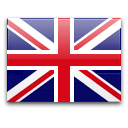TECHNICAL INFO & SDS
A very high-quality product, it constitutes our best shield for "long-lasting" anti-corrosion protection for metals. Easy to use, non-polluting, our product is also greatly appreciated by applicators for its great safety in use.


PERFORMANCE
IT IS PERFECTLY SUBSTITUTE FOR METALLIZATION OR HOT GALVANIZATION.
ADVANTAGES OF THE APPLICATION
-> Fairly wide range of application temperatures (unlike many protection systems).-> Very safe to use: 100% non-flammable inorganic aqueous binder, non-polluting, no fumes, non-toxic, non-allergenic, easy storage of the two components.
_____________________________________________________________
Warning : our aqueous phase inorganic silicate zinc hardens in dry heat and not in humidity like ethyl silicate zincs; applied, for example, in 2 coats totaling less than 30 microns, all the long-term tests conclude with an equivalent or greater protection than that of ethyl silicate zincs for a very significantly lower weight of zinc metal deposited, which makes it very competitive.


PRODUCT PRESENTATION
- Binder: 100% aqueous inorganic, of high technological design. (density 1.18)
- Pigment: zinc powder of very high specific purity. (density 7.14)
- Ready-to-use product (density 2.676)
AVERAGE COVERAGE
6 to 8 m2 / kg per coat (variable depending on temperature, humidity, application and surface roughness).
DRY FILM (satin gray; 1 color only)
15 to 35 microns maximum for 2 coats - 99% zinc (85 to 90% in contact with the underlying metal).
EXCEPTIONAL JOB SECURITY
Binder alone: 100% aqueous inorganic: non-polluting, absolutely non-flammable, no fumes.
Powder alone: group 32409 b, i.e. it gives off flammable gases, but only if it comes into contact with water.
Prepared product: No fumes, zero toxicity, non-allergenic; it is particularly well suited, for example, to the internal treatment of tanks or closed enclosures.
Note: only the powder packaged in boxes is subject to a safety label.
CONSERVATION OF THE PRODUCT
Very good ; preferably away from high heat and high humidity. Prolonged storage of the powder (+ - 18 months) can make it lose its floury consistency and let appear zinc agglomerates (which can disintegrate during mixing with a little insistence). Prolonged storage of the binder (+ - 24 months) causes the loss of a very small quantity of liquid which slightly vitrifies the inside of the cans and sometimes causes a few deposits which can be dissolved by stirring well.
Note: the latter can even freeze; it will be found intact when thawed).
PREPARATION OF METALS BEFORE APPLICATION
Mechanical abrasive blasting essential (dry air and without oil particles). The required standard is DS 3 (DS 2.5 may be suitable in certain special cases). On certain very soft metals (in the case of aluminum), mechanical stripping with a stainless steel wire brush stripping the metal perfectly may be suitable, but mechanical stripping with an abrasive jet is always preferable.
APPLICATION OF THE 1ST COAT ON METAL PICKLED
As quickly as possible (1 hour maximum in case of humidity limit - 5 hours maximum in dry weather).
APPLICATION INSTRUMENTS
-Brush : new (or never soaked in paints or organic solvents).
Note: pull the layers well, an excess of product is not recommended).
Pneumatic gun: new (strongly discouraged or professional user).
Note: a certain address is required to avoid "dusting".
CLEANING THE INSTRUMENTS
At thewater exclusively ; their reuse washed does not pose problems.
Note: to avoid clogging of the discharge pipes, choose a basin with a fairly large drainage section if the operation is frequent.
PREPARATION OF THE MIXTURE
Shake the binder in its original container, then pour it into an open container new or clean (which did not contain organic solvents), then slowly pour in the powder, stirring until a perfectly homogeneous mixture is obtained (use a very clean stirrer and remove any lumps).
(Proportions: 700 g of powder + 300 g of binder = 1 kg of product).
The product is then ready for use (no maturing time for the mixture to be expected). The density of the zinc powder being greater than that of the binder, it is necessary to stir the prepared product during use in order to keep it homogeneous.
DILUTION
Not recommended except in cases of extreme heat: Strictly 3 to 5% maximum of fresh water if necessary (consult us).
Note: no conventional solvent is suitable
MIXTURE LIFETIME
6 hours (depending on temperature).
OPTIMAL CLIMATE CONDITIONS OF APPLICATION
Dry weather (outdoors). Hygrometry less than 80%
Note: of course, application in a specialized workshop is ideal.
DRY TO THE TOUCH
15-30 minutes; instantaneous and without inconvenience on hot support, it can be much longer in low temperature and higher humidity (up to 7 hours).
TOO MUCH HEAT APPLICATION
If the coating is applied in direct sunlight, for example, the instant drying can sometimes produce small cracks (especially on the angles or protrusions) which can worry the applicator as to the good resistance of the protection. In fact, they are basically of little importance; it suffices to brush off these excess with a wire brush without necessarily adding a layer. It is therefore preferable to cover the structure before application to avoid this drawback.
Note: excess heat significantly increases the thickness of the coating, and therefore the consumption of product.
TOO HIGH HUMIDITY APPLICATION
If there is concern that the coating may not dry, drying can be induced by flame licking the freshly applied coating (with a well-regulated, non-charcoal flame, with an oxyhydrogen torch, or propane gas). saves a too late application of a wet evening, for example, and thus prevents deterioration of the coating the following night (procedure to be avoided of course. Risk of damaging the coating).
CONDENSING SURFACES
They are the enemies of all types of coating and therefore of applicators. In summer, especially in hot weather, beware of the sudden cooling of the temperature which can make the surface to be treated quickly condensing (which is not easy to appreciate to the eye)
FORCED ACCELERATION OF DRYING
If one wants practically instantaneous drying of the various layers, the metal surface must be heated before or after abrasive blasting. The coating can then be applied to the hot, dry surface. Moreover, the acceleration of the drying of small parts in the oven does not present the slightest drawback.
ACCIDENTAL SOIL
If the untreated DS 3 pickled surface is contaminated during handling (inadvertently) by greasy fingerprints (for example), do not degrease with an organic solvent but burn the impurities with a well-regulated flame, do not not charcoal, an oxyhydrogen torch or propane gas. There is no need to wait for the surface to cool before applying the coating.
INTER-LAYER INTERRUPTION
If we have had to interrupt the application work between coats for too long (for meteorological reasons for example) it is then necessary, when the work resumes, to wash the polluted structure (Saint Marc washing powder for example) to rinse thoroughly, then wait 24 hours and then pass the next layer (s)
COATING COVERED WITH WHITE TRAILS OR AUREOLES
Caused by overnight condensation, they most often appear the day after application in dry weather; they should be brushed carefully or washed by leaching followed by rinsing.
Note: they are the proof of a very good application, do not worry.
APPLICATION OF A SUBSEQUENT COAT OF THE SAME PRODUCT
Possible as soon as the coating feels dry to the touch.
In general, it is desirable not to interrupt the work to avoid any accidental pollution of the previous layers by fumes, exhaust gases or dust (we must obviously ensure that the previous layer is quite dry. ).
ADVISED NUMBER OF COATS
On average, two, but it is essential to refer to the additional specialized technical data sheets because, in some cases, a single coat may be sufficient; in other very specific cases, we can go up to 4 or even 5 layers (use in antifouling for example).
Note: in the majority of cases, an excess of product is detrimental.


OFFICIAL DOCUMENTS DOXANODE



